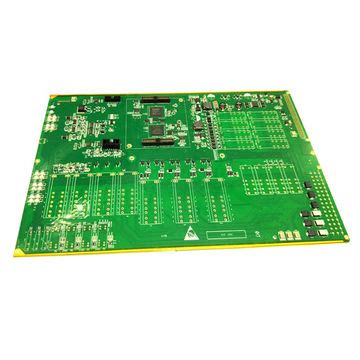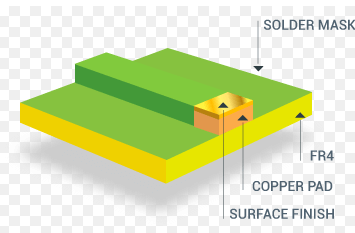Aluminum trace pcb
Advantages Of Using Aluminum Trace PCB In Modern Electronics
Aluminum trace printed circuit boards (PCBs) have emerged as a pivotal component in the realm of modern electronics, offering a multitude of advantages that cater to the ever-evolving demands of the industry. As electronic devices become increasingly compact and powerful, the need for efficient heat dissipation, enhanced durability, and improved performance has become paramount. Aluminum trace PCBs address these needs with remarkable efficacy, making them an indispensable choice for manufacturers and designers alike.
One of the foremost advantages of aluminum trace PCBs is their superior thermal conductivity.
In electronic devices, heat management is crucial to ensure optimal performance and longevity. Traditional PCBs, often made from materials like fiberglass, can struggle with heat dissipation, leading to potential overheating and reduced efficiency. In contrast, aluminum trace PCBs excel in this regard due to the inherent thermal properties of aluminum. The metal’s ability to conduct heat away from critical components ensures that devices remain cool, even under high operational loads. This characteristic is particularly beneficial in applications such as LED lighting, power converters, and automotive electronics, where heat generation is a significant concern.
Moreover, aluminum trace PCBs offer enhanced mechanical stability and durability.
The robust nature of aluminum provides a sturdy foundation that can withstand physical stress and environmental factors better than many other materials. This durability translates to a longer lifespan for electronic devices, reducing the need for frequent repairs or replacements. Additionally, the resilience of aluminum trace PCBs makes them ideal for use in harsh environments, such as industrial settings or outdoor applications, where exposure to moisture, dust, and temperature fluctuations is common.
In addition to thermal and mechanical benefits, aluminum trace PCBs contribute to improved electrical performance.
The metal’s excellent conductivity ensures efficient signal transmission, minimizing the risk of signal loss or interference. This attribute is particularly advantageous in high-frequency applications, where maintaining signal integrity is critical. Furthermore, the use of aluminum can lead to a reduction in the overall weight of the PCB, which is a significant consideration in portable and wearable electronics, where minimizing weight without compromising performance is essential.
The environmental impact of electronic manufacturing is an increasingly important consideration, and aluminum trace PCBs offer advantages in this area as well.
Aluminum is a highly recyclable material, and its use in PCBs aligns with the growing emphasis on sustainability and eco-friendly practices. By opting for aluminum trace PCBs, manufacturers can contribute to reducing electronic waste and promoting a more sustainable production cycle.
In conclusion, the advantages of using aluminum trace PCBs in modern electronics are manifold. Their superior thermal conductivity, mechanical stability, and electrical performance make them an ideal choice for a wide range of applications. As the electronics industry continues to push the boundaries of innovation, the role of aluminum trace PCBs is likely to expand, driven by their ability to meet the demands of high-performance, durable, and environmentally conscious electronic solutions. Consequently, manufacturers and designers are increasingly turning to aluminum trace PCBs as a reliable and efficient option, ensuring that modern electronic devices can operate at their best while meeting the challenges of today’s technological landscape.
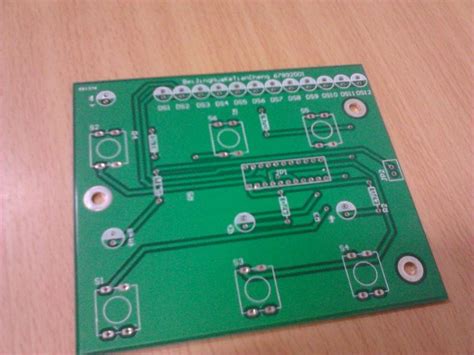
Thermal Management Solutions With Aluminum Trace PCB
In the realm of modern electronics, efficient thermal management is a critical concern, particularly as devices become more compact and powerful. One innovative solution that has emerged to address this challenge is the use of aluminum trace printed circuit boards (PCBs). These specialized PCBs are designed to enhance heat dissipation, thereby improving the performance and longevity of electronic components. As we delve into the intricacies of aluminum trace PCBs, it becomes evident that their unique properties offer significant advantages over traditional PCB materials.
To begin with, aluminum trace PCBs are characterized by their use of aluminum as a base material, which is known for its excellent thermal conductivity.
This property allows for rapid heat transfer away from heat-generating components, such as power transistors and LEDs, which are commonly found in high-performance electronic devices. By efficiently dissipating heat, aluminum trace PCBs help prevent overheating, which can lead to component failure and reduced device reliability. Consequently, these PCBs are particularly well-suited for applications where thermal management is paramount, such as in automotive electronics, LED lighting systems, and power electronics.
Moreover, the structural composition of aluminum trace PCBs contributes to their effectiveness in thermal management.
Typically, these PCBs consist of a thin dielectric layer that electrically insulates the aluminum base from the copper circuitry. This dielectric layer is engineered to have high thermal conductivity, further facilitating the transfer of heat from the circuitry to the aluminum substrate. As a result, the overall thermal resistance of the PCB is minimized, allowing for more efficient heat dissipation compared to conventional FR-4 PCBs.
In addition to their thermal advantages, aluminum trace PCBs offer mechanical benefits that enhance their appeal in various applications.
The inherent strength and durability of aluminum make these PCBs more resistant to mechanical stress and environmental factors, such as vibration and moisture. This robustness is particularly advantageous in harsh operating conditions, where reliability and longevity are critical. Furthermore, the lightweight nature of aluminum contributes to the overall reduction in device weight, which is a desirable attribute in industries such as aerospace and automotive manufacturing.
Transitioning to the economic aspect, it is important to note that while aluminum trace PCBs may have a higher initial cost compared to traditional PCBs, their long-term benefits often justify the investment. The improved thermal management capabilities can lead to enhanced device performance and reduced maintenance costs, as the risk of thermal-related failures is significantly diminished. Additionally, the extended lifespan of devices utilizing aluminum trace PCBs can result in cost savings over time, making them a cost-effective solution for many applications.
In conclusion, aluminum trace PCBs represent a significant advancement in the field of thermal management for electronic devices. Their superior thermal conductivity, combined with mechanical strength and durability, make them an ideal choice for applications where efficient heat dissipation is crucial. As electronic devices continue to evolve, the demand for effective thermal management solutions will undoubtedly grow, positioning aluminum trace PCBs as a key component in the development of next-generation technologies. By embracing this innovative approach, manufacturers can enhance the performance, reliability, and longevity of their products, ultimately meeting the ever-increasing demands of today’s technology-driven world.
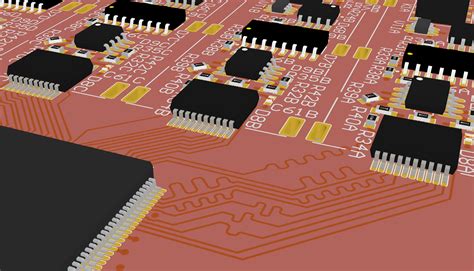
Design Considerations For Aluminum Trace PCB Manufacturing
In the realm of printed circuit board (PCB) manufacturing, the use of aluminum traces has emerged as a significant innovation, offering distinct advantages over traditional copper traces. As the demand for more efficient and reliable electronic devices continues to grow, understanding the design considerations for aluminum trace PCB manufacturing becomes crucial. This article delves into the key factors that must be taken into account to optimize the performance and manufacturability of aluminum trace PCBs.
To begin with, one of the primary considerations in designing aluminum trace PCBs is the thermal management capabilities they offer.
Aluminum, known for its excellent thermal conductivity, provides an effective solution for dissipating heat generated by high-power components. This characteristic is particularly beneficial in applications such as LED lighting, power electronics, and automotive systems, where efficient heat dissipation is critical to maintaining performance and longevity. Consequently, designers must carefully evaluate the thermal requirements of their applications and leverage the thermal properties of aluminum to enhance the overall thermal management of the PCB.
In addition to thermal considerations, the electrical conductivity of aluminum traces is another vital aspect to consider.
Although aluminum is not as conductive as copper, it is still a viable option for many applications due to its lightweight nature and cost-effectiveness. Designers must account for the slightly higher resistivity of aluminum by adjusting trace widths and thicknesses to ensure that the PCB can handle the required current loads without excessive voltage drops or power losses. This necessitates a thorough analysis of the electrical requirements and careful planning during the design phase to achieve optimal performance.
Moreover, the mechanical properties of aluminum also play a significant role in the design of aluminum trace PCBs.
Aluminum’s inherent flexibility and strength make it suitable for applications that require a certain degree of mechanical resilience. However, these properties also necessitate specific design considerations to prevent issues such as trace cracking or delamination during the manufacturing process. It is essential to incorporate appropriate design features, such as stress-relief patterns and adequate support structures, to mitigate potential mechanical stresses and ensure the structural integrity of the PCB.
Transitioning to the manufacturing process, the choice of substrate material is another critical factor in aluminum trace PCB design.
The substrate must be compatible with aluminum traces and capable of withstanding the thermal and mechanical demands of the application. Common substrate materials include aluminum-based metal core PCBs (MCPCBs) and insulated metal substrates (IMS), both of which offer excellent thermal performance and mechanical stability. Selecting the appropriate substrate material is crucial to achieving the desired performance characteristics and ensuring the reliability of the final product.
Furthermore, the surface finish of aluminum traces is an important consideration in the manufacturing process.
The surface finish not only affects the solderability and corrosion resistance of the traces but also influences the overall performance and longevity of the PCB. Common surface finishes for aluminum traces include organic solderability preservatives (OSP) and immersion tin, both of which provide adequate protection while maintaining good electrical performance. The choice of surface finish should be guided by the specific requirements of the application and the environmental conditions in which the PCB will operate.
In conclusion, the design considerations for aluminum trace PCB manufacturing encompass a range of factors, including thermal management, electrical conductivity, mechanical properties, substrate material selection, and surface finish. By carefully evaluating these aspects and integrating them into the design process, manufacturers can harness the benefits of aluminum traces to produce high-performance, reliable PCBs that meet the demands of modern electronic applications. As technology continues to evolve, the role of aluminum trace PCBs is likely to expand, making it imperative for designers and manufacturers to stay informed about the latest advancements and best practices in this field.
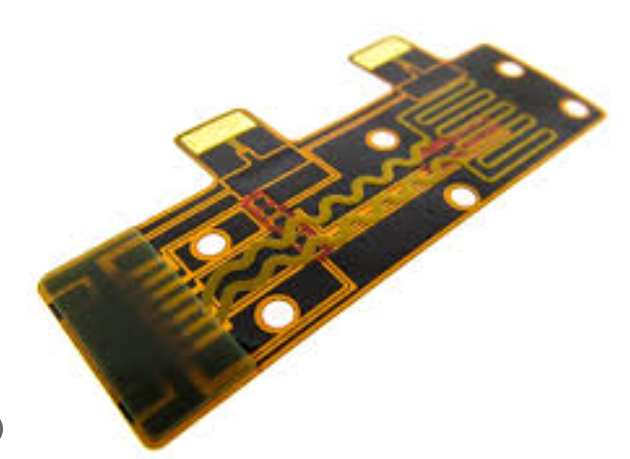
Comparing Aluminum Trace PCB To Traditional Copper PCBs
In the realm of printed circuit boards (PCBs), the choice of materials plays a crucial role in determining the performance, efficiency, and cost-effectiveness of electronic devices. Traditionally, copper has been the material of choice for PCB traces due to its excellent electrical conductivity and relative affordability. However, recent advancements have introduced aluminum as a viable alternative, prompting a comparison between aluminum trace PCBs and their traditional copper counterparts.
To begin with, the primary distinction between aluminum and copper PCBs lies in their thermal conductivity.
Aluminum, known for its superior thermal properties, offers enhanced heat dissipation capabilities. This characteristic is particularly advantageous in high-power applications where managing heat is critical to maintaining device performance and longevity. In contrast, while copper also possesses good thermal conductivity, it does not match the efficiency of aluminum in dissipating heat. Consequently, aluminum trace PCBs are increasingly favored in applications such as LED lighting, power converters, and automotive electronics, where thermal management is paramount.
Moreover, the weight of the materials is another factor to consider.
Aluminum is significantly lighter than copper, which can be a decisive advantage in applications where weight reduction is essential. For instance, in the aerospace and automotive industries, where every gram counts, the use of aluminum trace PCBs can contribute to overall weight savings, thereby enhancing fuel efficiency and performance. This weight advantage, coupled with its thermal properties, makes aluminum an attractive option for designers seeking to optimize both performance and efficiency.
In addition to thermal and weight considerations, cost is a critical factor in the selection of PCB materials.
Aluminum is generally more abundant and less expensive than copper, which can lead to cost savings in the production of PCBs. This cost-effectiveness is particularly relevant in large-scale manufacturing, where even small reductions in material costs can result in significant savings. However, it is important to note that the manufacturing processes for aluminum trace PCBs can be more complex, potentially offsetting some of the material cost benefits. Therefore, manufacturers must carefully evaluate the overall cost implications when choosing between aluminum and copper.
Despite these advantages, aluminum trace PCBs are not without their limitations.
One notable drawback is their lower electrical conductivity compared to copper. This can result in higher resistance and potential signal loss, which may not be suitable for all applications, particularly those requiring high-speed data transmission. Additionally, the mechanical properties of aluminum, such as its ductility and tensile strength, differ from those of copper, which may affect the durability and reliability of the PCB in certain environments.
In conclusion, the choice between aluminum trace PCBs and traditional copper PCBs involves a careful consideration of various factors, including thermal management, weight, cost, and electrical performance. While aluminum offers distinct advantages in terms of heat dissipation and weight reduction, copper remains superior in electrical conductivity and may be more suitable for applications demanding high-speed data transmission. Ultimately, the decision will depend on the specific requirements of the application and the priorities of the designer. As technology continues to evolve, the ongoing development of materials and manufacturing techniques will likely further influence the landscape of PCB design, offering new opportunities and challenges for engineers and manufacturers alike.

